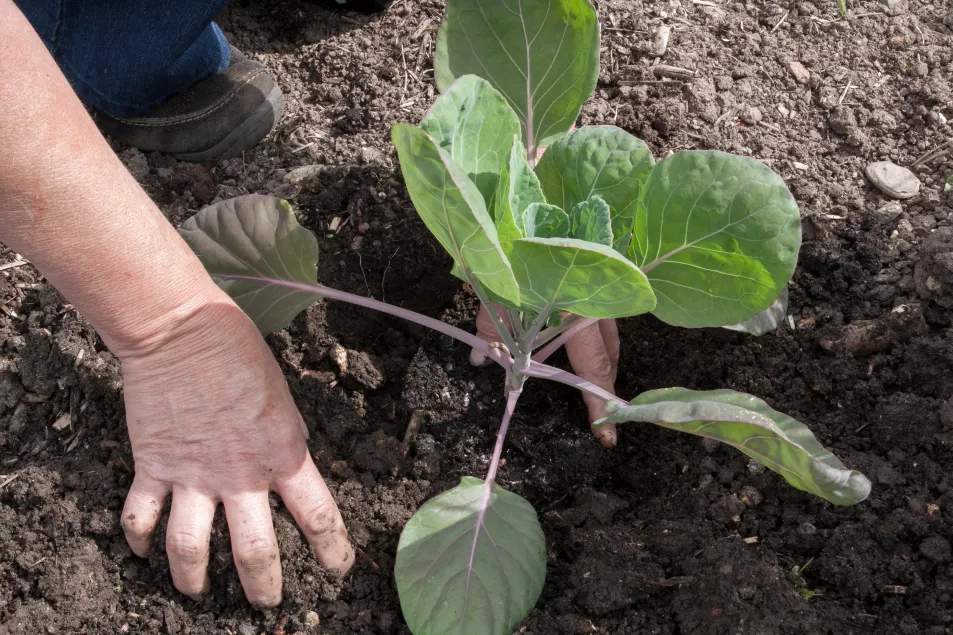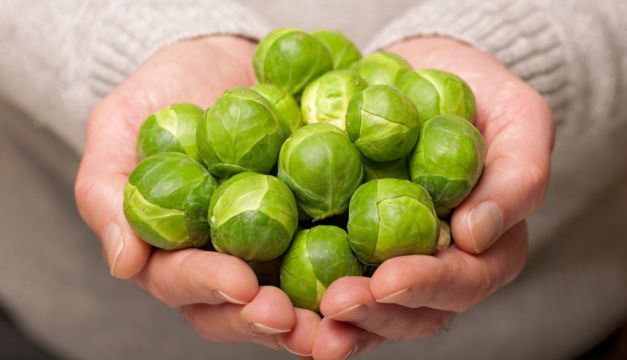Love them or hate them, Brussels sprouts are a mainstay of the Christmas table.
Whether perked up with crispy lardons and chestnuts, or sizzled with pistachios and pomegranate, there are lots of recipes out there to make sprouts a tasty side.
View this post on Instagram
Advertisement
So, save a spot in your veggie plot next year to grow your own – they’ll taste sweeter than any shop-bought packet.
Here, horticulturist Guy Barter offers tips and tricks on how to grow your own.
What types are the best for growing?
“It’s better to use the hybrid kinds because the open-pollinated ones which are a lot cheaper no longer make good crops. If possible, go for F1 hybrids, which are more vigorous and productive and make crops of large sprouts,” Barter says.
“You can get away with one packet of seeds – either an early or a maincrop – because they crop for quite a long time. Good varieties include ‘Crispus’, which is resistant to a wide range of diseases including club root, which is rife on allotments. For people who like big sprouts, ‘Marte’ is a good one, which can be picked from October to January.”
When should you sow seeds?

Start early, he advises. “In the south you can start in February, but March is the usual time. You can sow them indoors or outside, but as the seed is quite expensive, my preference is to germinate them indoors in a small pot and when the seedlings have come up, put them in the greenhouse or a coldframe or a sheltered place outside under some horticultural fleece.
“When they are big enough after a few weeks, transplant them to individual 9cm pots. They will grow in those pots for another four weeks, before you can plant them out in May. Brussels sprouts are extremely resilient – they are not tender like a tomato or a courgette.”
Can you sow the seeds outside?
“Many people are more interested in sustainability and rather than using potting media and pots, which tend to be plastic, they prefer to plant them outside,” Barter says.
“To do that, you need to plant them in soil which hasn’t got club root in it – some allotments would be unsuitable. Sow them in a sunny spot, in a 12-15mm deep drill, with the seed barely covered. They should come up within two weeks and cover them with a cloche, or a coldframe or some fleece.”

When the plant has got seven leaves, which is usually some time in May, they can be planted out as bare root transplants and will cope well with being carefully forked out of the seedbed and moved, popped in a hole which has been filled repeatedly with water and the soil moved around them.
Alternatively, sow three seeds at 60cm intervals and thin them down to one seed once they’ve germinated, but you’ll need to protect them from birds and insects at the seedling stage, with a cloche or horticultural fleece.
Sprout maintenance
Make sure they are watered well and put a small cardboard collar around the base of the plant to stop cabbage root fly in its tracks. he advises.
Once they have established, you usually find there’s enough water in the soil and they grow like mad during June. Brussels sprouts like a rich, fertile soil, so add organic matter to enhance the soil before planting. Chicken manure pellets are a good fertiliser, Barter recommends.
How much space do they need?
“A lot. Normally in a garden you put them 90cm apart between the row and 60cm between plants.”
Are there any pests or diseases to watch out for?
“Yes, club root, which specifically targets any form of the cabbage family. Aphids and whitefly can invade them, but the main thing is caterpillars. When you see holes appearing in the leaves, pick off the caterpillars of cabbage moth and cabbage whites, which will help prevent damage to the plant.”
Pigeons also love them, so cover your plants with sticks and taut netting to keep them off, he says.
When will the sprouts be ready for picking?
“Sprouts form almost immediately the plant reaches 30 or 45cm. The sprouts become usable some time in late September and are at their best in October and November, still coming through in December and January,” he says.
“Remember that they taste best when we’ve had really cold weather because the plant armours itself against freezing by building up sugars in its vulnerable parts like its buds, which are the Brussels sprouts. They will taste a lot sweeter after cold weather than the ones you pick in September.”

The best way to harvest is to cut them at the base, where they are biggest. You can pick them as you need them over a few weeks, rather than cutting the whole stalk and bringing it indoors, Barter says.
You can also cut off the top of the plant in November or December and eat it as greens, as you would cabbage.







